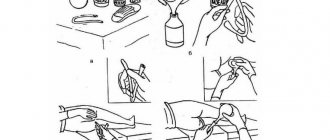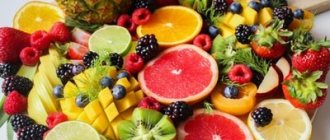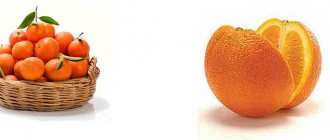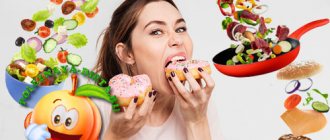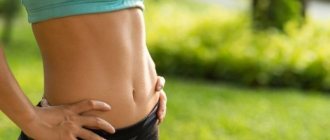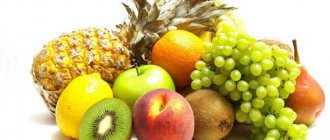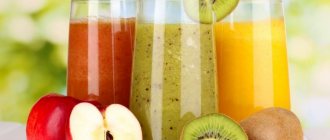Gluten in production
You probably guessed which specific factories use gluten in their production. That's right, these are factories that produce bakery and meat products.
In addition to the fact that gluten helps in creating a homogeneous mixture of flour, it is also an additive in minced meat, sausages, various sauces, and ice cream. Thanks to this protein, the products will retain their shape for a long time and have a longer shelf life. Gluten is also used in chocolate products (and even in the production of caramel and dragees) and cereal-based drinks (vodka, beer, whiskey).
Now you yourself can answer the question of which foods contain gluten. Obviously, it is rich in baked goods, any baked goods (including bread), pasta, cereals, breakfast cereals, ketchups and vinegars based on stabilizers, preserves based on thickeners, sausage or minced meat products, yoghurts, cheeses and curd masses, packaged cottage cheese, cream, margarine.
What foods contain wheat gluten? We find it in wheat cereals, bread, pasta, and breakfast cereals. Drinks that contain gluten include alcohol (which we discussed above), instant coffee, cocoa, granulated tea, and carbonated drinks. In addition to all this, it is found in products that contain fatty acids E471, dye E150a, maltitol E965, maltol E636, isomaltol E953. Some vitamins and medications also contain some amount of gluten. The first include the drugs “Jungle” and “Complivit”, and the second - the drugs “Festal”, “Mezim-Forte”, “Allohol”, “Aminalon”, “Arbidol”, “Fitolysin gel”, “Aerovit”, “Ibuprofen” ", "Pentoxyl", "Furosemide". You can list many more different tablets containing complex natural protein, but if you are afraid of it, read the instructions. It should indicate whether the drug contains flour.
Not by bread alone
Yes, you won't have to eat bread. In particular, wheat and rye. There are alternatives in the form of buckwheat flour, special baked goods, and homemade recipes.

Of course, people consume many types of foods, the most exotic ones. Proof of this are the recipes of the diverse cuisine of the peoples of the world.
In Southeast Asia, they traditionally eat insects; in the harsh climate of the North, they eat raw meat; they obtain vitamins and microelements from the blood of deer. In Norway you can try a specific fish that is “spoiled” using technology. On Lake Baikal you will be treated to omul “with flavor”. At the same time, such nutrition is justified by natural conditions and is familiar to residents.
Our body, like a musical instrument, can be tuned to any tone. It is important to be able to listen to yourself, understand the signals that he gives, and respond to them competently. A healthy balance is important; specialists who know the properties of products and their compatibility help to maintain it. Harmony is the key to health. Treat food with care, read books on nutrition, get competent, professional advice. Then dietary food will bring many times more benefits and tasty variety to your table.
Lose 20 kg in one week at home - myth or reality
Top 7 best drugs for weight loss
| Name | Price |
| Black Latte for weight loss | 99 rub. |
| NATURAL Fit Calorie Blocker Powder | 990 rub. |
| Purple tea "Chang-Shu" | 499 rub. |
| Fat burning drops “Honey Spas” | 1980 rub. 99 rub. (until 02/12/2021) |
| Detox cocktail for weight loss | 147 rub. |
| Lipocarnit for weight loss | 990 rub. |
| Reduslim weight loss product | 149 rub. |
Views: 6,622
Is it possible to eat gluten and what harm does it cause?
More yes than no. Do not rush to remove gluten from your diet for fear that it will harm your health, worsen your skin condition, and cause a number of diseases. Be reasonable! Nothing in moderate doses can cause harm. Valuable vegetable protein, which is gluten, cannot be excluded. In addition, by choosing products that do not contain it, you automatically deprive yourself of a number of other nutrients (which could be in this porridge, for example). The possibility of allergies will increase in children who are not given gluten-containing foods before seven months of age.
You should only stop consuming gluten if you are sensitive to it. The first symptoms that will hint you about this are headaches, weakness and abdominal discomfort or bloating. Some people suffer from celiac disease - gluten intolerance. To maintain health in general and especially the health of the gastrointestinal tract, you will have to carefully study the composition of the product for the absence of natural protein.
Fifty fifty
For every pro argument, there can be as many cons.
For example, five yes:
- You carefully monitor your diet.
- Consume more natural products.
- Read the labels. The composition of the products is under control.
- You can eat well.
- Fast food, baked goods, buns, and industrially produced cakes are automatically excluded. Which contributes to a healthy diet.
Five no
- It’s easy to go too far and overdo the restrictions. In this case, you interfere with organic processes without fully understanding their significance. Biochemistry is not a science for amateurs. A profound restructuring of the body is taking place. Requires supervision by a nutrition specialist. Conflicting information about gluten in context for a healthy person.
- The content of foods with starch in the diet increases.
- You are depriving yourself of the “gluten” benefits. Vitamins, minerals, amino acids. Diet cannot be 100% classified as a healthy lifestyle. Approach your choice consciously, look for sources from the world of products. Supplement your diet wisely.
- Make your own medical diagnosis. There are cases when they decide that gluten is “to blame” for the problems, which is not a confirmed fact. Because A whole group of diseases and types of ailments have similar symptoms.
- Labor intensive, not for the lazy. If used for figure correction, it requires home preparation. For example, “healthy pasta” made from buckwheat flour. Guaranteed natural products, without industrial excesses, are suitable for weight loss. It is also important to learn how to bake baked goods by purchasing a bread machine. This is necessary to achieve results and provide a complete menu.
“Soft” forms, intended for people without pathologies, suggest eliminating “excess” gluten, normalizing the total content, and tracking the “sources” of gluten.
A variety of recipes, including baking from buckwheat, rice, soy flour. Meat, fish, careful processing before use for food. Cereals in the form of buckwheat, brown rice, and the use of healthy, unrefined vegetable oil make the menu, with some effort, home-cooked, acceptable for a balanced diet.
There are 2 main groups that have tried gluten-free diets:
- For medical reasons. This is a necessity. Reviews give practical advice, share information and recipes. They note the positive dynamics and talk about potential obstacles for those starting the gluten-free journey.
- At your own request, for weight loss. Results vary depending on the timing of compliance and individual characteristics. Reviews range from critical, skeptical to positive. Nevertheless, it is worth noting the popularity; they note, among other things, a general improvement in well-being and emotional mood.
Essential Casein
Casein, like gluten, is a complex natural protein, but of dairy origin. Our body needs casein, which has a lot of beneficial properties! It contains calcium, essential amino acids, phosphorus, and bioactive milk peptides. Surprisingly, casein is an unrestricted dietary supplement (according to WHO and FAO). It is capable of providing our body with energy for a long time, which can be used by those who want to lose excess weight and who are watching their figure. The particular benefit of casein is its positive effect on the muscular and circulatory systems.
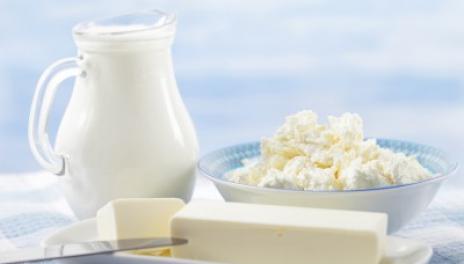
How to effectively lose excess weight?
Our users have tried a lot of weight loss methods and techniques to find ones that really work and are effective. And here are the best of them:
- Extraslim. Allows you to quickly burn excess weight, reduce appetite and cleanse the body of toxins. It turned out that some domestic stars also use it.
- Compliance with the principles of proper nutrition. You can find reviews and instructions on other diets and nutrition systems on the pages of my website
- Active lifestyle.
What foods contain casein?
The main sources of casein are milk (cow's, goat's), kefir, yogurt, sour cream, yogurt, fermented baked milk, cottage cheese and curd products, butter. The record holder for its content is cheese. It contains up to 30% of this healthy natural protein. You will also provide your body with casein by consuming chocolate and dairy-based baked goods, such as cottage cheese muffins, cheesecakes or cheesecakes with cottage cheese. However, you understand that it is better to eat cheese or drink a glass of milk than to eat cheesecake (if your goal is to saturate the body with casein or provide it with energy).
Smart reboot
It is recommended to safely adhere to such a diet for a short period of time. It is safe to eliminate gluten for a week if your state of mind and body allows.
The usual foods will remain in the diet:
- Meat and fish, poultry
- Vegetables
- Fruits, berries
- Homemade sauces without wheat flour
- Dairy products
- Milk in dishes
- Cheese
- Eggs
- Buckwheat, rice, millet, corn
- Vegetable and butter
- Honey
- Bread, pastries, pasta made from gluten-free flours
Healthy cooking methods are practiced: boiling, stewing, grilling, baking, steaming
Lactose is a healthy sugar
Many have heard this term and when asked “What is lactose?”, they will most likely answer that it is milk sugar. And they are right. Lactose is a natural sugar found in milk-based products. Its main purpose is to provide us with glucose, which is formed due to its breakdown. Also, lactose is a substrate for the development of lactobacilli, which are beneficial to our body; it facilitates the absorption of calcium, magnesium and iron, stimulates nervous regulation, plus prevents caries. Undoubtedly, lactose is a very healthy product.
Where can we get it?
If you use milk (cow, goat, buffalo), kefir, fermented baked milk, yogurt, cream, butter, yogurt, sour cream, cottage cheese in your diet, you can saturate your body with lactose. It is also found in buttermilk, kumiss and whey. What about cocoa, mashed potatoes, semolina, margarine, baked goods, ice cream, condensed milk and dark chocolate? Yes, they have some lactose too! It is especially important in infancy and its need is met by mother's milk.

The essence
Gluten is a plant protein, gluten, found mainly in cereals (wheat, rye, barley, oats). This substance gives more fluffiness to baked goods, viscosity to sauces and desserts, and also extends their shelf life. When gluten entering the gastrointestinal tract is not completely processed, it is deposited on the walls of the stomach, damaging them, and, moving through the small intestine, it destroys its villi, disrupting the movement of food and its absorption. As a result, the body is poisoned by decay products, metabolism is disrupted, digestion worsens and excess weight appears.
A gluten-free diet, based on excluding foods with gluten from the diet, allows you to normalize the functioning of the digestive system, and in the case of a disease associated with indigestion of gluten - celiac disease - literally save a person’s life. In addition, avoidance of gluten is necessary in case of individual hypersensitivity to this substance, which is expressed by discomfort, abdominal pain, flatulence, and other disorders. In fact, such allergic reactions are not fatal (unless accompanied by anaphylactic shock), but cause a lot of inconvenience and anxiety.
Also, eliminating gluten from the diet is absolutely necessary for people suffering from certain neuropsychiatric diseases, in particular schizophrenia and autism. There is a scientifically proven connection between the development of such disorders and gluten consumption. Casein, a milk protein, has a similar effect on the body. This is due to the fact that both of these proteins are converted into peptides, which are normally completely broken down in the intestines. In the presence of these diseases, this process is disrupted, undigested peptides enter the blood, and then act on brain cells, like opium, causing mental disorders. Therefore, a gluten-free and casein-free (dairy-free) diet can return an autistic child to normal development, as well as significantly reduce the symptoms of schizophrenia, dementia, mental retardation, and multiple sclerosis.
In addition, gluten can provoke the occurrence of many other pathological conditions, such as asthma, epilepsy, lymphoma, dermatitis, Addison's disease, Parkinson's disease and others. This is why in Europe and America doctors prohibit people over 30 from consuming a lot of gluten-containing foods.
If a gluten-free diet is used by a healthy person to lose weight, there is no need to completely eliminate gluten from the diet. It is enough just to abandon its main sources.
What does excess lactose lead to?
With a large amount of lactose, bloating, loose stools, or, conversely, constipation are possible. Also, excessive consumption of milk sugar causes allergies. If you are lactose intolerant, you should therefore avoid products containing it. It can be either a congenital disease or one that arises with age (in older years). The occurrence of lactase deficiency with age is quite normal. It is caused by low consumption of milk and dairy products. This is treated by taking the lactase enzyme, which replaces lactose.
Rules
When following a gluten-free weight loss method, you must follow these rules:
- a month after switching to a new diet, you need to assess your condition - if your health has improved, your stool has normalized, there have been positive changes in your appearance, you need to continue the diet, since it is useful not only for normalizing weight, but also for health in general;
- refuse to purchase instant food - ready-made soups, breakfast cereals, etc.;
- eat only home-cooked food;
- prepare yoghurts, curd desserts and other lactic acid products with your own hands;
- be sure to combine porridge with vegetables;
- meat dishes can be eaten separately, grilled or steamed;
- use only natural spices without any additives (in seasonings containing salt and monosodium glutamate, gluten is added as a stabilizer and thickener);
- increase the amount of protein and fiber in your diet to ensure normal digestion and general condition.
To increase the effectiveness of the diet, it is necessary to increase physical activity and reduce calorie intake. It should be borne in mind that foods that do not contain gluten are characterized by increased fat content and calorie content.
Results
To summarize, let’s remember which products contain which substances.
- What foods contain gluten and lactose? Both components are present in cream, yogurt, and cottage cheese.
- What foods contain gluten and casein? Both components are found in yoghurts, cheeses and cottage cheese.

Now you know which foods contain gluten and lactose, as well as casein. Using such a set in your diet, you will equally saturate it with all the necessary components!
Minuses
Among the disadvantages of this diet are:
- the need for constant monitoring of the composition of dishes;
- limited range of gluten-free products in stores;
- complete rejection of traditional flour products.
To minimize the disadvantages of a gluten-free diet, you should not completely give up gluten during the process of losing weight.
A gluten-free diet has no contraindications or duration restrictions, but adherence to too long requires taking vitamin-mineral complexes to compensate for the deficiency of iron, calcium, vitamins D and group B.

